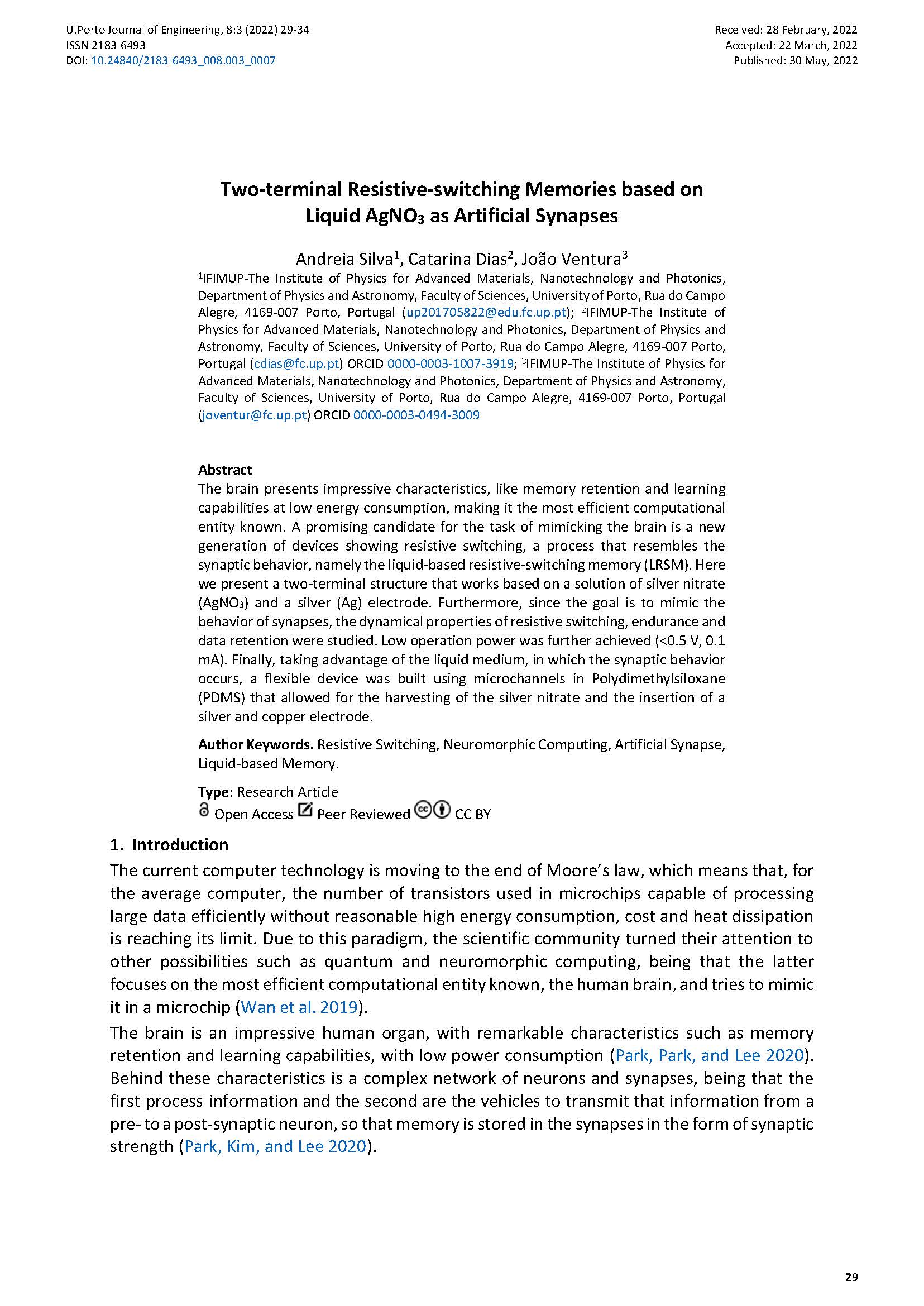Two-terminal Resistive-switching Memories based on Liquid AgNO3 as Artificial Synapses
Main Article Content
Abstract
The brain presents impressive characteristics, like memory retention and learning capabilities at low energy consumption, making it the most efficient computational entity known. A promising candidate for the task of mimicking the brain is a new generation of devices showing resistive switching, a process that resembles the synaptic behavior, namely the liquid-based resistive-switching memory (LRSM). Here we present a two-terminal structure that works based on a solution of silver nitrate (AgNO3) and a silver (Ag) electrode. Furthermore, since the goal is to mimic the behavior of synapses, the dynamical properties of resistive switching, endurance and data retention were studied. Low operation power was further achieved (<0.5 V, 0.1 mA). Finally, taking advantage of the liquid medium, in which the synaptic behavior occurs, a flexible device was built using microchannels in Polydimethylsiloxane (PDMS) that allowed for the harvesting of the silver nitrate and the insertion of a silver and copper electrode.
Downloads
Article Details

This work is licensed under a Creative Commons Attribution 4.0 International License.
Authors who publish with this journal agree to the following terms:
- Authors retain copyright and grant the journal right of first publication with the work simultaneously licensed under a Creative Commons Attribution License that allows others to share the work with an acknowledgement of the work's authorship and initial publication in this journal.
- Authors grant the journal the rights to provide the article in all forms and media so the article can be used on the latest technology even after publication and ensure its long-term preservation.
- Authors are able to enter into separate, additional contractual arrangements for the non-exclusive distribution of the journal's published version of the work (e.g., post it to an institutional repository or publish it in a book), with an acknowledgement of its initial publication in this journal.
- Authors are permitted and encouraged to post their work online (e.g., in institutional repositories or on their website) prior to and during the submission process, as it can lead to productive exchanges, as well as earlier and greater citation of published work (See The Effect of Open Access).

